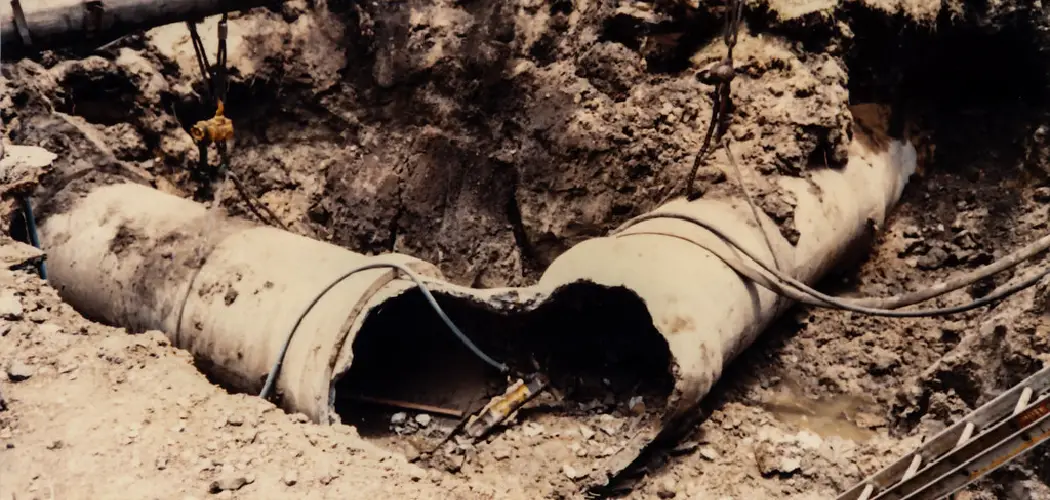Do you think you might have a broken drain pipe in your home but aren’t sure how to tell? From loud banging noises coming from the walls to strange smells, there are several obvious and not-so-obvious signs that indicate your drain could be facing damage. The good news is that with a few simple steps, you can determine if the problem lies in the pipes and whether professional repair work is needed.
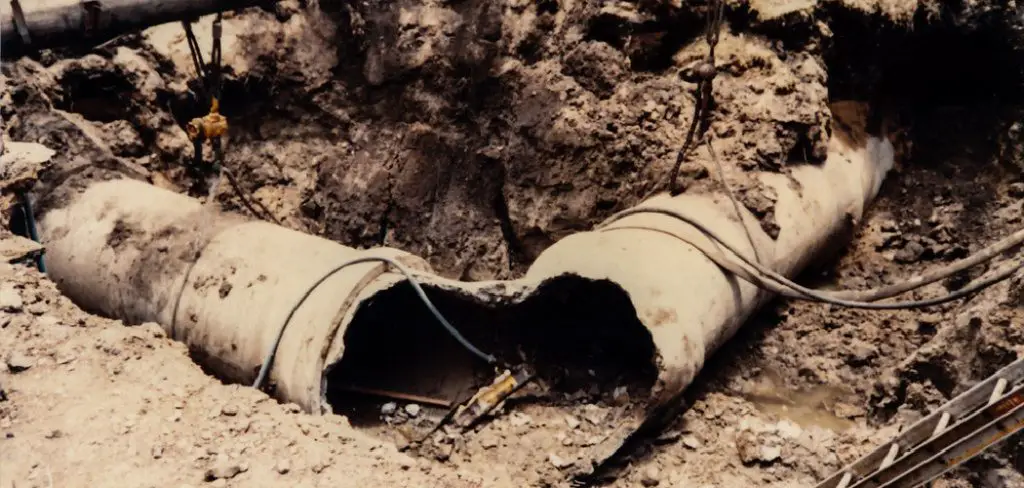
In this blog post, we’ll look at signs, symptoms, and solutions for how to tell if a drain pipe is broken. Keep reading for everything you need to know about assessing the health of your home’s drainage system!
9 Best Sings and Symptoms on How to Tell if a Drain Pipe is Broken
1. Strange Smells:
First and foremost, if you smell an unpleasant odor coming from your drains, it could be a sign that something is wrong. Most plumbing systems are designed to keep smells out of your home, so if you’re smelling anything different than water or soap, it’s worth investigating further. This is especially true if the smell is coming from multiple drains in your home.
2. Slow Drainage:
If you notice that water is taking longer to drain than usual, it could be a sign of blockages or damage in your pipes. This is particularly noticeable in sinks and tubs, where you’ll see standing water for an unnaturally long time. Slow drainage can also lead to other issues, like clogs and backups. If you’re experiencing this symptom, it’s crucial to address it sooner rather than later.
3. Wet Spots:
Are there wet spots in your yard that won’t dry out? If so, it could be a sign of a broken drain pipe. When pipes are cracked or damaged, water can seep out and saturate the ground above. You may also notice patches of lush green grass or vegetation in one area, which could be an indication of a broken pipe leaking water.
4. Water Damage:
Water damage is never a good sign, and it can take several forms when it comes to your drains. Look for signs like mold growth on walls or ceilings, sagging floors, or peeling paint.
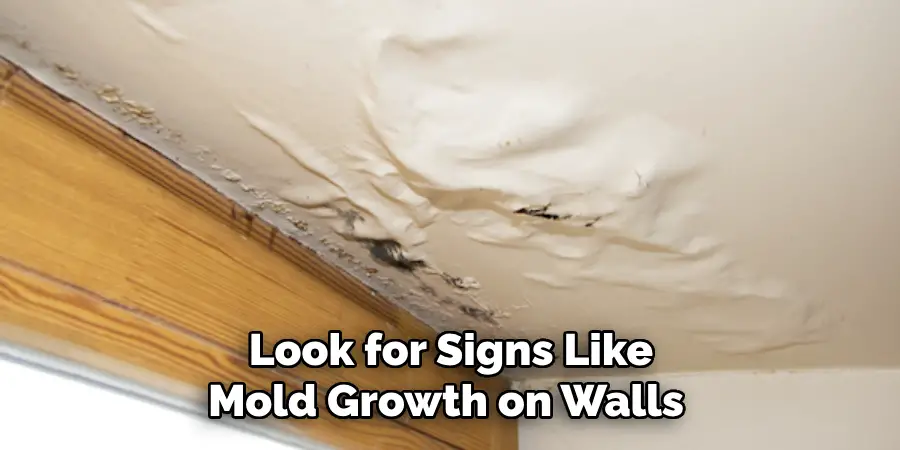
These are all indications that water is leaking where it shouldn’t be and could be a sign of a broken drain pipe. While not all water damage is caused by pipes, it’s always best to get a professional opinion.
5. Cracks in Foundation:
If you have a basement or crawl space, check for cracks in the walls or floor. Water can seep into these spaces from broken drain pipes and cause damage over time. It may look like a small crack now, but if left unrepaired, it could lead to significant structural problems down the road. This is especially true for older homes with pipes that may have deteriorated over time.
6. Unusual Noises:
Do you hear loud banging or clanging noises coming from your walls? This could be a sign of a broken drain pipe, particularly if it happens when you flush a toilet or run water down the drain. These noises are caused by air trapped in the pipes, trying to escape through the broken area. If you hear these noises regularly, it’s worth investigating further.
7. Pest Infestations:
Pests like rodents and insects are attracted to moisture and can easily find their way into your home through damaged drain pipes. If you notice an increase in pests, even after taking preventative measures, it could be a sign of a broken pipe. These pests can also cause further damage to your home, so it’s important to address the issue as soon as possible.
8. High Water Bills:
A sudden increase in your water bill could be a sign that something is wrong with your plumbing system, including broken drain pipes. Even small leaks can add up quickly and significantly impact your monthly costs. If you notice a spike in your water bill without any changes to your usage, it’s essential to get a professional inspection.
9. Foul Odors from the Sewer:
Sewer gas has an unmistakable smell and can be hazardous to your health if exposed for extended periods. If you start smelling this odor coming from your drains, it could be a sign of broken pipes, particularly in the sewer line. This issue needs to be addressed as soon as possible by a professional plumber. This is not a problem you can fix on your own, so it’s crucial to seek help immediately.
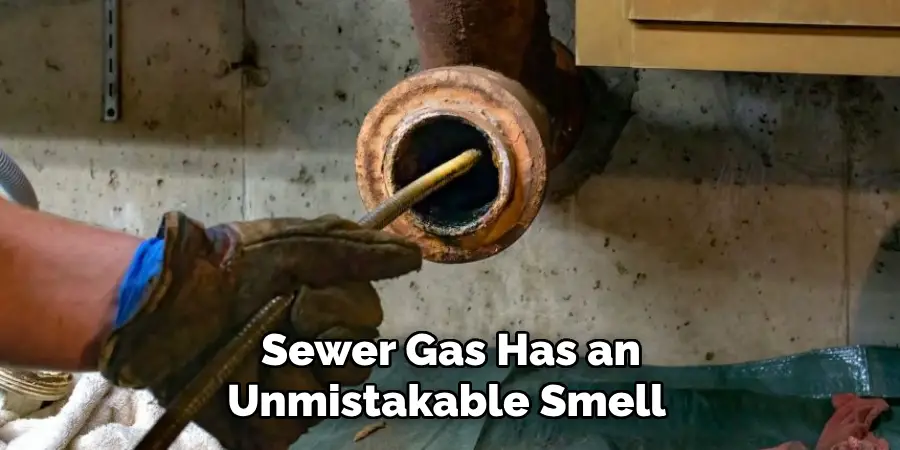
Following these nine signs, you can confidently assess your drain pipes’ health and determine whether any repairs are needed. If you notice any of these symptoms, it’s essential to act quickly and call a professional plumber for an inspection.
Remember, the longer you wait, the more severe the damage could become. Don’t hesitate to address potential drain pipe issues; your home’s well-being depends on it! Happy plumbing!
Solutions for Broken Drain Pipes
1. Pipe Relining:
Pipe relining is a popular method for repairing broken drain pipes. This process involves inserting a new pipe liner into the existing damaged pipe and curing it in place using heat or UV light. This creates a strong, seamless, and long-lasting repair without the need for excavation. Pipe relining is a cost-effective and efficient solution for broken drain pipes that are not severely damaged.
2. Pipe Bursting:
Pipe bursting is another popular method for repairing broken drain pipes. This process involves using a hydraulic system to pull a new pipe through the old damaged pipe, breaking it apart as it moves along. The new pipe is then placed in the same location as the old pipe, creating a new and stronger pipeline. This method is typically used for larger-diameter pipes and can be more costly than pipe relining.
3. Excavation Of The Damaged Pipe:
In some cases, when the damage to a drain pipe is extensive or located in hard-to-reach areas, excavation may be necessary. This involves digging up the damaged pipe and replacing it with a new one. While this method can be more disruptive and time-consuming, it is typically used for severely damaged pipes that cannot be repaired using other methods.
4. Use of Chemical Drain Cleaners:
Chemical drain cleaners can be a quick and easy fix for minor clogs or blockages in drain pipes. However, they should not be used to repair broken drain pipes as they may cause further damage to the pipes and can be harmful to the environment. Using chemical drain cleaners may also indicate that there is a larger underlying issue with the pipe that needs to be addressed.
5. Regular Maintenance and Inspections:
Prevention is always better than cure when it comes to broken drain pipes. Regular maintenance and inspections of your drain pipes can help identify any potential issues before they become major problems.
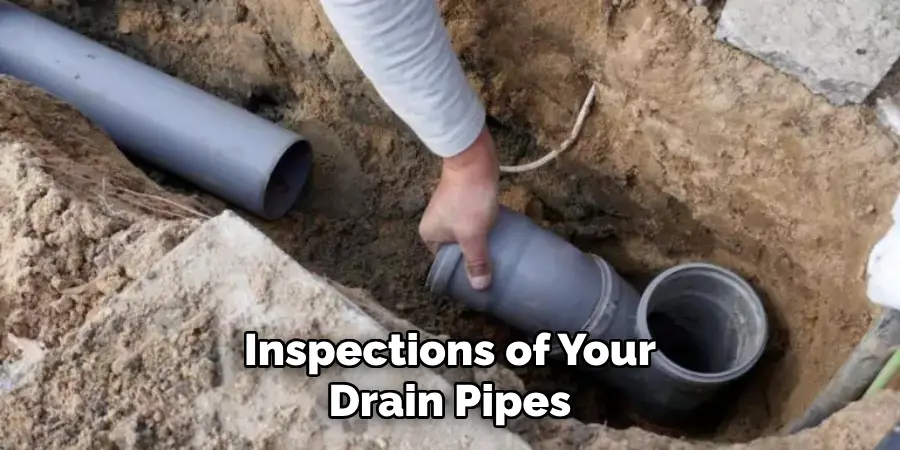
This includes checking for leaks, clogs, and any signs of damage. It is recommended to have a professional plumber conduct these inspections at least once a year to ensure the proper functioning of your drain pipes.
Following these solutions can help you detect and repair broken drain pipes in a timely and efficient manner. It is important to address any issues with your drain pipes as soon as possible to prevent further damage and costly repairs.
Remember, prevention and maintenance are key to ensuring the longevity of your drain pipes. So, be proactive and take care of your drain pipes regularly to avoid any major problems in the future. Happy plumbing!
Frequently Asked Questions
How Do I Know if My Drain Pipe is Broken?
When it comes to plumbing issues, a broken drain pipe can be a major concern. However, many homeowners may not know how to tell if their drain pipe is actually broken or just experiencing common clogs. To help identify the issue and get the necessary repairs done, we’ve compiled a list of frequently asked questions related to this topic.
What Causes Drain Pipes to Break?
Drain pipes can break for a variety of reasons, including age, material, and external factors. Older pipes may simply wear out over time, while pipes made from materials like clay or cast iron may be more prone to cracking. Additionally, shifting soil or tree roots can put pressure on the pipe and cause it to break.
What Are the Signs of a Broken Drain Pipe?
There are several signs that may indicate a broken drain pipe. These can include slow draining or standing water in sinks or tubs, foul odors coming from drains, and gurgling noises when using plumbing fixtures.
You may also notice damp spots on walls or floors near where the pipes run. If you experience any of these issues, it’s important to have your drain pipe inspected by a professional plumber.
How Do Plumbers Determine if a Pipe is Broken?
Plumbers use specialized equipment like cameras and sonar to inspect pipes and determine if there is a break or other issue. They may also perform pressure tests or use dye testing to pinpoint the exact location of the break. Once the issue has been identified, they can recommend the best course of action for repair or replacement.

What Can I Do to Prevent Drain Pipes from Breaking?
While some causes of broken drain pipes are out of your control, there are steps you can take to prevent them from happening. Regularly cleaning and maintaining your pipes can help prevent clogs and buildup that can put a strain on the pipes.
It’s also important to be mindful of what you flush down your drains, as certain items can cause damage over time. If you have trees on your property, regularly checking and trimming their roots can also help prevent them from damaging your pipes.
Conclusion
All in all, knowing how to tell if a drain pipe is broken is important for homeowners to avoid major plumbing issues. By understanding the causes and signs of a broken pipe, as well as taking preventative measures, you can keep your plumbing system in good condition and save yourself from costly repairs in the future. If you suspect that your drain pipe may be broken, it’s always best to consult a professional plumber for an accurate diagnosis and proper repair.
Don’t ignore the signs and address any issues with your drain pipe promptly to keep your plumbing running smoothly. So, make sure to regularly maintain and care for your drain pipes to avoid potential problems in the future. Remember, a little prevention goes a long way when it comes to keeping your plumbing system functioning properly. Happy plumbing!

